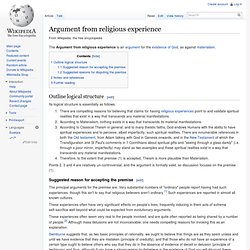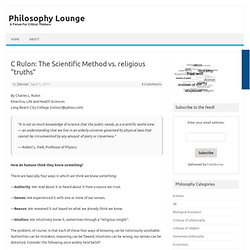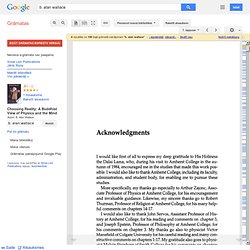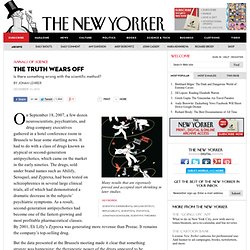

What is the scientific method. What is the scientific method?

By Patricia Ryaby Backer June 9, 1998, Revised Note: This section was drawn from Rutherford & Ahlgren's (1990) book Science for all Americans, which is a publication from the AAAS. According to Rutherford and Ahlgren (1990), scientific inquiry is not composed of a fixed set of steps that scientists always follow all of the time: it is not a single path that leads them unerringly to scientific knowledge.
However, there are consistent features of scientific thinking that are consistent among scientists. In the scientific method, the validity of scientific claims is settled by referring to observations of phenomena (accurate data). A key to the objectivity of the data is the notion of random selection. Many times it is not practical to use a double-blind approach although scientists still attempt to use randomization to control for differences among the subjects. Why was the scientific method so attractive to people solving non-scientific problems?
Introduction. Argument from religious experience. The Argument from religious experience is an argument for the existence of God, as against materialism.

Outline logical structure[edit] Its logical structure is essentially as follows: There are compelling reasons for believing that claims for having religious experiences point to and validate spiritual realities that exist in a way that transcends any material manifestations.According to Materialism, nothing exists in a way that transcends its material manifestations.According to Classical Theism in general, and to many theistic faiths, God endows Humans with the ability to have spiritual experiences and to perceive, albeit imperfectly, such spiritual realities. Points 2, 3 and 4 are relatively un-controversial, and the argument is formally valid, so discussion focuses on the premise (1). Suggested reason for accepting the premise[edit] Suggested reasons for disputing the premise[edit] Notes and references[edit] Further reading[edit]
Religion in an Age of Science. Ian G.

Barbour is Professor of Science, Technology, and Society at Carleton College, Northefiled, Minnesota. He is the author of Myths, Models and Paradigms (a National Book Award), Issues in Science and Religion, and Science and Secularity, all published by HarperSanFrancisco. Published by Harper San Francisco, 1990. This material was prepared for Religion Online by Ted and Winnie Brock. The first major challenge to religion in an age of science is the success of the methods of science. The Big Questions in Science and Religion - Keith Ward, Harry L. Poe. What’s Truth? Scientific Method Under the Microscope. Zinātnes un reliģijas dialogs. Zinātnes un reliģijas dialoga gr. C Rulon: The Scientific Method vs. religious “truths” By Charles L.

Rulon Emeritus, Life and Health Sciences Long Beach City College (ruloncl@yahoo.com) “It is not so much knowledge of science that the public needs, as a scientific world view — an understanding that we live in an orderly universe governed by physical laws that cannot be circumvented by any amount of piety or cleverness. . ” — Robert L. Park, Professor of Physics How do humans think they know something? There are basically four ways in which we think we know something: —Authority: We read about it or heard about it from a source we trust. —Senses: We experienced it with one or more of our senses. Relationship between religion and science. Hinduism & Science. Hinduism & Science By Kelli Bunner, 2005 (In his essay “Ways of Relating Science and Theology,”1 Ian G.

Barbour delineates four options for viewing the relationship between religion and science. These are conflict, independence, dialogue, and integration. While Barbour discusses these options in the framework of the Christian faith, they may be applied to Hinduism as well. Choosing Reality: A Buddhist View of Physics and the Mind - B. Alan Wallace - Google grāmatas. Books.google.lv - Choosing Reality shows how Buddhist contemplative methods of investigating reality are relevant for modern physics and psychology.

How shall we understand the relationship between the way we experience reality and the way science describes it? In examining this question, Alan Wallace discusses two opposing... Reality . lappuse A Buddhist View of Physics and the Mind B. 3. lappuse. The decline effect and the scientific method. On September 18, 2007, a few dozen neuroscientists, psychiatrists, and drug-company executives gathered in a hotel conference room in Brussels to hear some startling news.

It had to do with a class of drugs known as atypical or second-generation antipsychotics, which came on the market in the early nineties. The drugs, sold under brand names such as Abilify, Seroquel, and Zyprexa, had been tested on schizophrenics in several large clinical trials, all of which had demonstrated a dramatic decrease in the subjects’ psychiatric symptoms. As a result, second-generation antipsychotics had become one of the fastest-growing and most profitable pharmaceutical classes. By 2001, Eli Lilly’s Zyprexa was generating more revenue than Prozac. It remains the company’s top-selling drug. But the data presented at the Brussels meeting made it clear that something strange was happening: the therapeutic power of the drugs appeared to be steadily waning. The study turned him into an academic star.